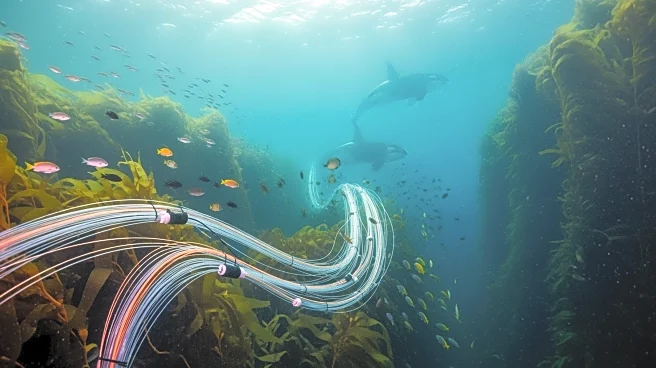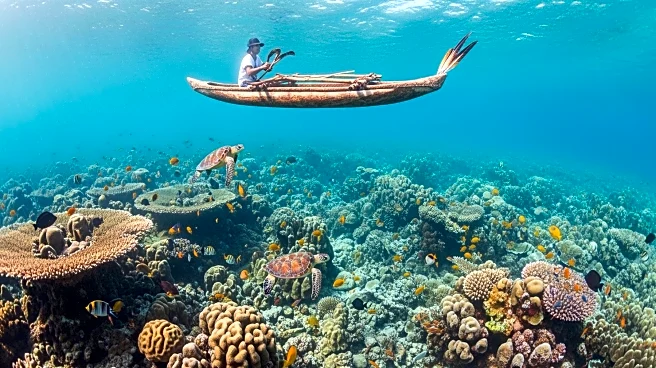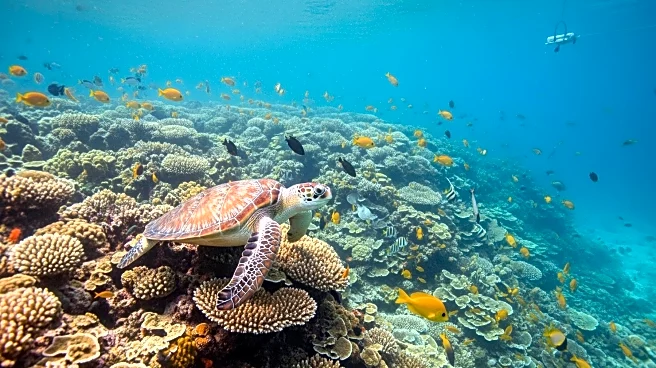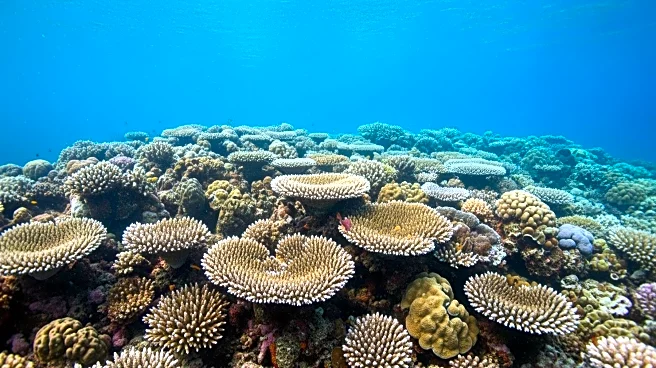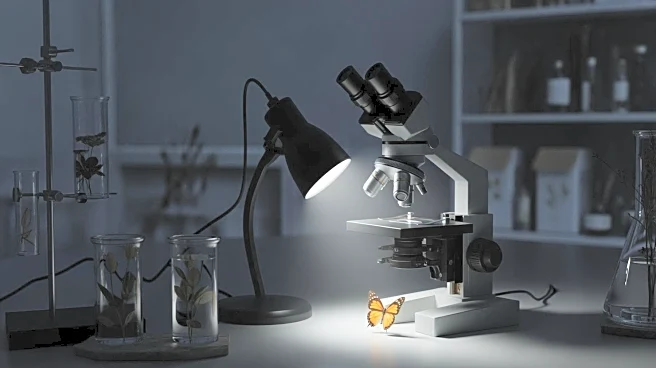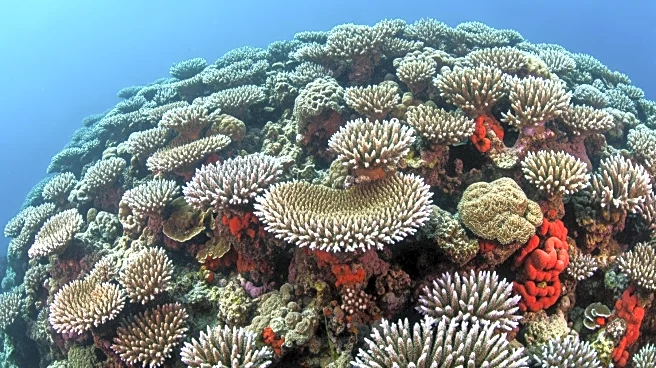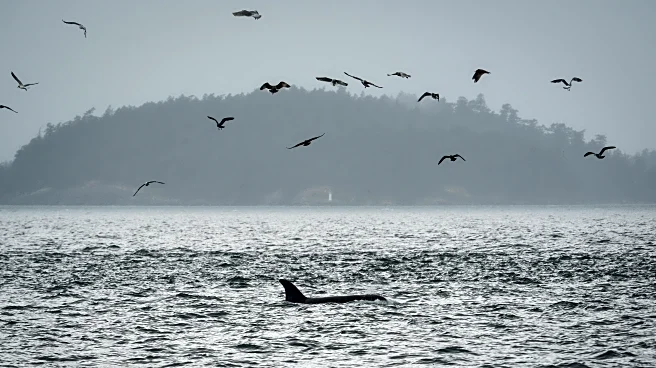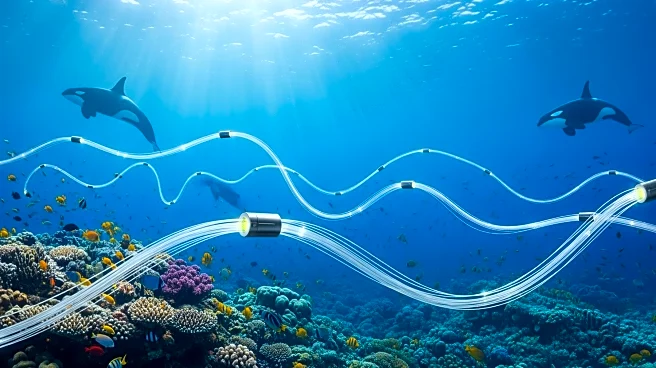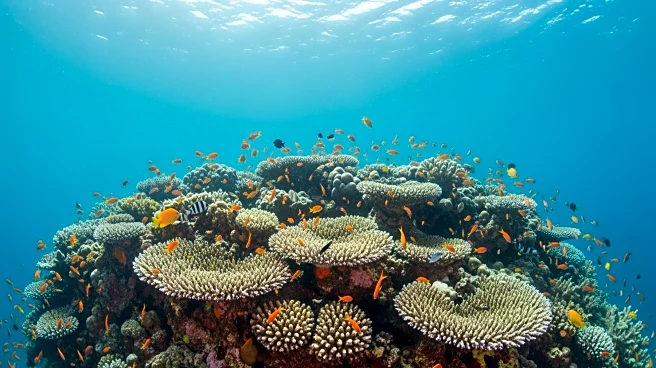What's Happening?
Scientists from the University of Washington have deployed over a mile of fiber-optic cable in the Salish Sea to test its potential as a continuous underwater microphone for monitoring endangered orcas.
This initiative aims to transform existing internet cables into a vast listening network, capturing the clicks, calls, and whistles of whales to study their responses to ship traffic, food scarcity, and climate change. The technology, known as Distributed Acoustic Sensing (DAS), was originally developed for infrastructure monitoring but is now being adapted for oceanic applications. Unlike traditional hydrophones, DAS can turn entire cables into sensors, providing precise data on animal locations and movements. The project seeks to address the challenges faced by the Southern Resident orcas, whose population is critically endangered due to noise pollution, toxic contaminants, and food scarcity.
Why It's Important?
The deployment of fiber-optic cables for monitoring orcas is significant as it could revolutionize conservation efforts for marine life. The Southern Resident orcas are facing a triple threat, including the decline of their primary food source, Chinook salmon, which has dropped by 60% since 1984. By providing real-time data, DAS technology could help mitigate these threats by informing dynamic management strategies, such as adjusting ship activities to reduce noise pollution. This approach could also enhance understanding of orca behavior, potentially leading to more effective conservation policies. Furthermore, with 870,000 miles of undersea cables globally, this technology could be expanded to monitor marine life worldwide, filling critical data gaps necessary for biodiversity conservation and climate change mitigation.
What's Next?
If successful, the fiber-optic monitoring system could be integrated into existing marine management practices, offering real-time insights into orca movements and behaviors. This could lead to immediate actions, such as altering ferry schedules to minimize noise pollution when orcas are detected nearby. Additionally, the upcoming High Seas Treaty, which allows for new marine protected areas, could benefit from the data provided by this technology, helping prioritize areas for protection. Researchers are also looking to expand the application of DAS technology to other marine species, potentially transforming global ocean monitoring and conservation strategies.
Beyond the Headlines
The use of fiber-optic cables for marine monitoring highlights the innovative repurposing of existing infrastructure for environmental conservation. This approach not only leverages technological advancements but also underscores the importance of interdisciplinary collaboration in addressing ecological challenges. The project could set a precedent for similar initiatives, encouraging the integration of technology into conservation efforts and fostering a deeper understanding of human impacts on marine ecosystems.
